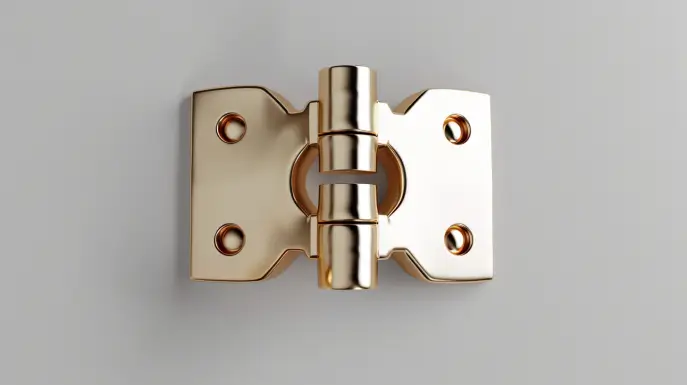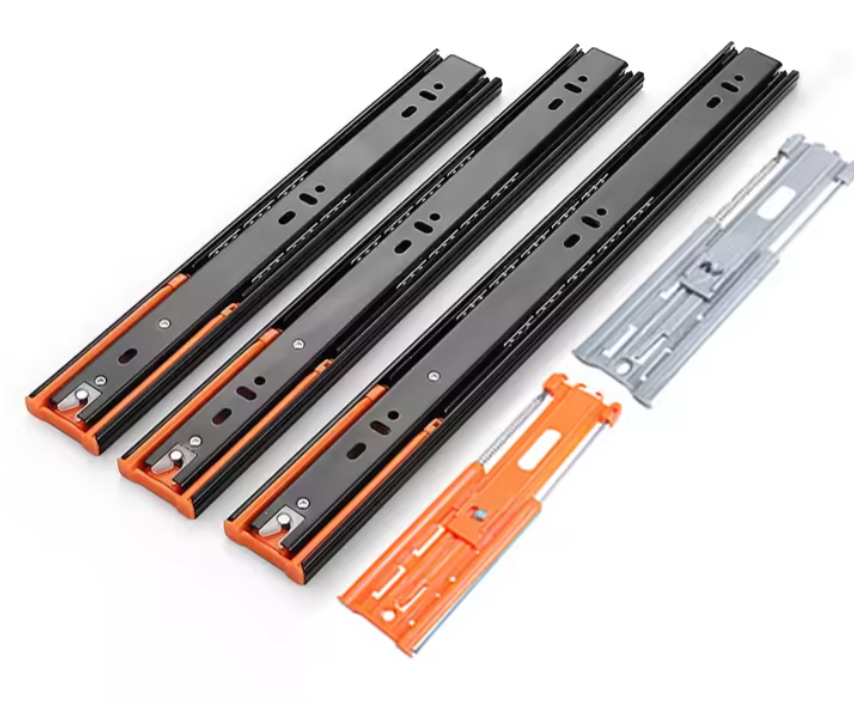Furniture Hardware Unveiled: A Comprehensive Guide – Part 1
Hardware Components: Unveiling the Categories
When we think of furniture hardware, the first things that come to mind are often slides, hinges, and the like. However, hardware encompasses precise categories, primarily classified into foundational, functional, and decorative. Among these, foundational and functional hardware are the most commonly referenced in custom furniture. As these two categories offer numerous talking points, we’ll delve into foundational hardware in detail today.
Foundational Hardware
Foundational hardware typically serves to connect various parts of cabinets, including drawer slides, hinges, handles, screws, and other common hardware pieces, constituting indispensable components of furniture.
(1) Hinges
Hinges bear the responsibility of connecting cabinet bodies and door panels, making them a core element of foundational hardware. Hinges endure multiple openings and closings daily, along with the weight of door panels. Poor hinge selection can not only affect user experience but also pose safety risks.
Key Considerations:
- Material Selection: Opt for stainless steel material, preferably nickel-plated for corrosion resistance and high strength.
- Brand Preference: Established brands offer durability; for instance, hinges used by well-known brands like Blum can withstand up to 50KG load and maintain stability after 200,000 continuous openings without deformation.
- Accessory Inspection: Hinges are best paired with dampers to prevent shock absorption and ensure quiet operation.


(2) Drawer Slides
Also known as runners or guides, drawer slides are crucial for smooth sliding of drawers or cabinet doors, determining their durability and usability.
There are various types of drawer slides, including side-mount slides (two/three-section rails), undermount slides, and tandem slides. Among these, undermount slides are often used for drawers with high load-bearing requirements.
Nowadays, many households opt for drawer slides with dampers to achieve silent and cushioned closure, preventing injuries from rapid drawer closure.
Key Considerations:
- Material Quality: The load-bearing capacity of a drawer is closely related to the quality of the slide’s steel material. When selecting, check for any looseness or flipping by pressing down on the bottom rail. Avoid selecting if any such issues arise.
- Roller Material: The quality of material impacts the smoothness of the slide’s operation. During selection, repeatedly slide to assess smoothness. The best slides operate smoothly without obstruction and noise.
(3) Clothes Rods
Clothes rods, also known as garment rods, consist of rod brackets and rods. Since clothes rods need to support clothing throughout the year, their hardness and load-bearing capacity are essential. High-quality clothes rods not only prevent slipping but also remain undistorted and durable over time.
Key Considerations:
When selecting clothes rods, perform a load-bearing test. Quality rods can bear weights ranging from 50 to 100kg.
(4) Flip-Up Door Supports
Flip-up door supports, also known as gas struts or gas springs, consist of pressure cylinders, pistons, piston rods, and several connecting parts, filled with high-pressure nitrogen gas.
For instance, cabinet flip-up doors achieve the one-touch opening effect using gas struts. Gas struts are divided into ordinary and “stop-anywhere” types. The latter offers a better user experience, allowing doors to stop at any desired height/angle, preventing head bumps or doors from reaching inaccessible heights.
(5) Handles
Handles are among the most visible hardware components, primarily categorized as surface-mounted, recessed, or concealed.
Previously, surface-mounted handles were the most common. However, concerns about family members’ bumps or for aesthetics have led to the popularity of recessed and concealed handles.
Key Considerations:
- Material Selection: Handles come in various materials. Common metal materials include copper, zinc alloy, aluminum alloy, and stainless steel, while non-metal materials include leather, plastic, and wood.
- Among metal types, full copper and stainless steel offer the best texture, while aluminum alloy with plating or spray paint is also good.
- Among non-metal types, solid wood looks appealing but lacks moisture resistance, ceramic is often used for retro styles, and leather is suitable for certain special designs.
- Emphasis on Appearance: Apart from material, handle appearance is also a consideration. Generally, different handle materials correspond to common home decor styles.
- Chinese and Nordic styles: Wood and ceramic handles.
- Modern, light luxury, minimalist styles: Alloy, copper, leather metal handles.

Apart from these, the “one-door-to-ceiling” handles are also trending in custom cabinets, providing a more straightforward and atmospheric appearance, instantly elevating the entire space.
Details Determine Quality of Life: Often, the seemingly “insignificant” details play a significant role. When considering custom furniture, do not overlook the importance of hardware.
In the next issue, we’ll provide a detailed explanation of the highly popular “functional hardware” in the hardware category. Stay tuned, everyone!


